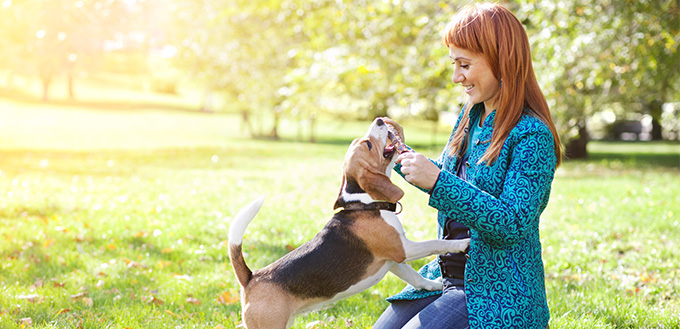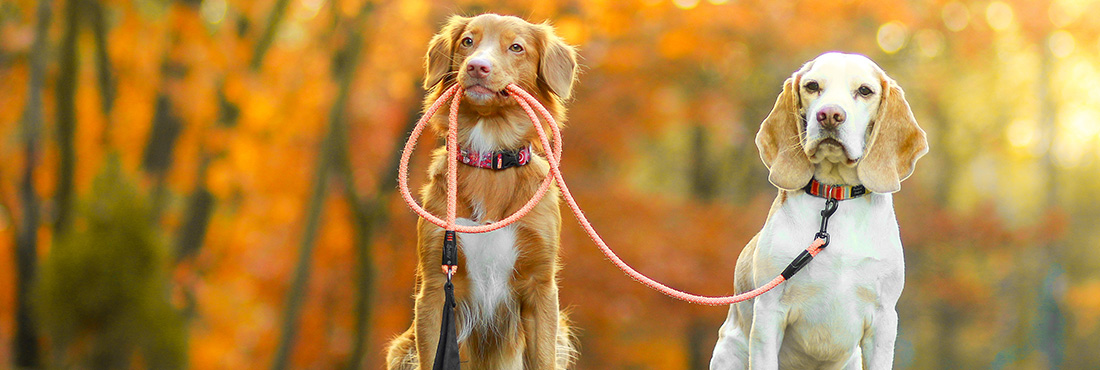It is every dog owner’s inherent dream to have a pet that will follow all of his commands and obey all instructions as directed. While we can all gawk at just how amazing some of the pooches are performing on reality shows and competitions, all is not lost with our own respective dogs. As long as you have the right attitude, a strongly positive mindset, lots of patience and perseverance, an understanding of basic dog behavior and psychology, and knowledge of these 10 tips to make your dog more obedient, you will also be successful in developing compliance in your doggy.
Establish House Rules Everyone In The Home Can Adhere To
Even before you bring home a pooch from a breeder or even from the animal shelter, it is imperative that you decide and establish some basic ground rules to be observed by everyone else in the home when the dog is already there. The idea is to make sure that the pet doesn’t get conflicting commands or ‘rules’. For example, if you think that your dog should not go up the sofa yet another family member thinks that it is okay, then this will confuse the dog as to who among you it will obey. Naturally, it will obey the person who gives it such an indulgence.
That being said, gather everyone around and try to discuss some of the things that everyone will have to be consistent about once the dog is already home. These can include the area where the dog will be sleeping, eating, and eliminating and whether it will be allowed to enter the bedroom or not. You might also want to establish ground rules on table scraps as well as snacking as the saddened face of a dog can truly break the hearts of kids. Again, if you want your dog to be more obedient, you have to start it with consistent rules in your home.
Pick Your Doggie’s Name and Stand By It
Alongside consistency in house rules, you will also have to be consistent in its name. For example, if you have decided to call your dog “Spot” then everyone else in the family will have to call it as such. There should be no whistling or the use of any other sound to call it. The idea is for the dog to understand that the sound “Spot” refers to it and that it cannot be called by any other name. Imagine if someone else will be whistling at your dog, if it is properly trained to respond only to the call or the sound of its name, then it will ignore the whistle. Just remember to give your dog positive reinforcement every time it responds to the call of its name.
Housetrain Your Pooch
All puppies must undergo housetraining. If you brought an adult dog into your home, you will have to housetrain it, too; although it would require more patience and greater perseverance on your part. What is important is for puppies and dogs to learn when and where to eat, sleep, drink, urinate, and defecate. Again, perseverance is the key and the consistent efforts of everyone in your household can definitely help. For instance, if you have designated a certain spot in the kitchen to feed your dog, make sure that everyone else in the family is going to feed this pup in the same area.
Teach Your Dog Basic Commands and Tricks
You don’t need to teach your dog very fancy tricks. All it needs to learn are the basics such as the commands ‘sit’, ‘stay’, ‘come’, and ‘down’. You might think that these are very easy but for a dog to associate these verbal cues to an acceptable or desirable behavior takes a lot of time and effort to master. If you don’t have the patience to see the training of your dog, then it is almost always certain that will fail in making your dog become more obedient. Make sure to use these basic commands even when not training as it strongly reinforces their understanding of what it means to sit, go down, stay, and even come. At any rate, the repetition of these commands in every imaginable aspect of their existence will help them get accustomed to your voice and your commands.
Learn How to Use Treats for Positive Reinforcement and as Lure
We always hear dog behaviorists talk about positive reinforcement whenever we train or teach dogs. The reason is quite simple. Teach them to associate a desirable behavior with something really pleasurable so that they will be more than enticed to keep on doing the same behavior over and over. The key, therefore, is in identifying that thing that will bring pleasure to them. Good thing dogs aren’t really that difficult to please. Playing with them, cuddling them, and even hugging them are all excellent ways of showing your pooch that you love it. However, one trick that never fails when it comes to positive reinforcement is by giving them their favorite dog treats. The key is to learn when to give the treat so that they will associate it with what they have just done. Technically, it’s all about timing.
Keep Obedience Training Sessions Relatively Short
One of the trickiest things to master when it comes to canine obedience training is knowing when to stop the training. What usually works with one person doesn’t necessarily mean it should work with another. The major obstacle to effective obedience training is the pooch’s attention span. Puppies, like children, have a relatively short attention span. If you are not mindful of the time you spend training them, there is a strong tendency that they will feel bored and simply lose interest in what you are teaching them altogether. While experts recommend keeping training sessions to within 10 to 15 minutes, there are also those that say to take your cue from your dog. If in case no amount of redirection or correction is ever going to snap your dog out of its disinterest, then you might want to stop right there and resume the next day. Don’t forget to give positive reinforcement, though.
Observe Consistency in Your Commands As Well As Actions
We have always emphasized the importance of consistency in obedience training as well as in other aspects of your dog’s life. You may have to refer back to the fundamental house rules that you have set together with your family to check if these are being observed or not. It is critical to call the attention of family members who are not seriously adhering to these rules. Again, the thing that you have to understand is to avoid getting your dog confused as to which ‘command’ it should follow.
Allow Your Dog to Socialize
Dogs are considered to be social animals. They thrive in groups. As such, make sure to bring your pooch out to the dog park or even to let it play with other dogs in your neighborhood. This helps provide it with the social interactions it needs to become a well-balanced dog. Socialization also allows dogs to try out their new-learned skills. They can show off to other dogs the tricks they have learned and this can do a lot of good things to how well they respond to your commands.

Avoid Forcing Your Dog to Do Something it Doesn’t Want to Do
Some pet owners simply don’t understand the very nature of dogs. They think that dogs are dumb creatures that need to be reined in if you want them to obey you. Unfortunately, some canine breeds are highly intelligent. And while they can obey your commands, if they think that they will be put in a very precarious situation, you can always expect them to show a little resistance. Some dog owners believe in the value of aversive canine training techniques, putting emphasis on punishment supposedly as a means of instilling discipline. Sadly, research has shown that while aversive techniques may work, these do not inherently teach dogs what an acceptable behavior really means. What they only learn is that by not doing something, they will avoid pain.
Use Appropriate Technology
Sometimes you may have to use the correct technology to help you instill obedience in your dog. While we don’t strongly recommend the use of dog shock collars or any other device that may hurt our dogs, there will always be instances when such technologies are an absolute must. For example, dogs that have issues responding to positive reinforcement methodologies may respond exceptionally well to the delivery of sounds, vibrations, light effects, or even static electricity produced by dog shock collars. These technologies can help correct negative behavior. However, efforts should still be made to supplement it with positive reinforcement techniques so your dog will also learn what acceptable behavior is.
Teaching your dog to be more obedient takes patience, perseverance, and, above all, consistency. These are the important ingredients to making sure your pooch will obey your every command.
Sources:
- Debra Horwitz, DVM, Disobedient, Unruly and Excitable Dogs, VCA
- Blind Obedience, PETA








It really help my dogs… Thank you very much!
Good to know thank you
We adopted a red healer 4/30/21 about one year old, weighs 26 pounds.
She is very smart but shy and Timid.
Bob Lee spoke very highly of you, but we live on Whidbey island.
Is there any suggestions …do’s or don’t do’s trying to get her to relax more?
I take my two dogs to a cemetery along the highway to run and play. When they start getting close to the highway I cannot get them to stop unless I get hateful and demand them to come back. It makes me feel horrible to have to do this but that is all that works. It makes me feel like I am being mean to them, but that is better than them getting on the highway. If people hear me I am sure they think I am mean to them. I am at t he end of my rope. I don’t know what to do.